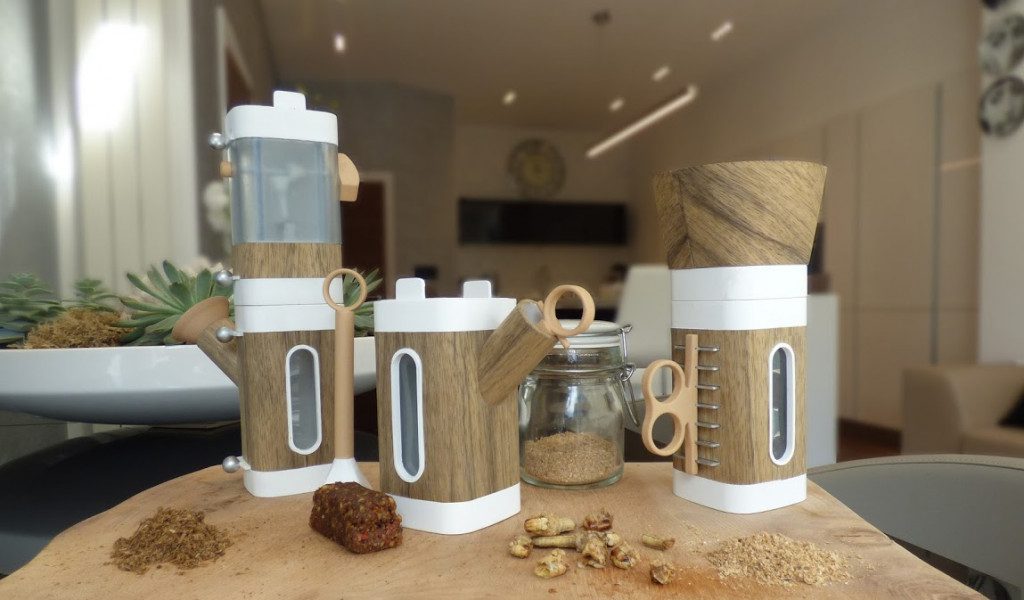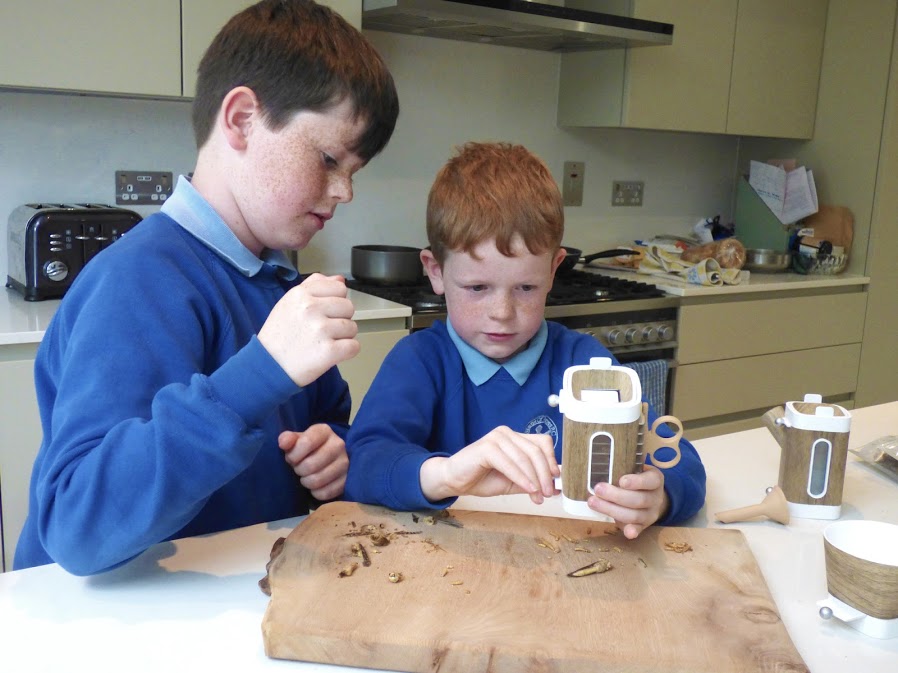Tastebugs is a 3D printed modular kitchen utensil to teach children about the benefits of eating insects. We may squirm now, but it’s likely that bugs will make it to our plates very soon.
Would you feed your children bugs? With consumers becoming more conscious of the impact of eating unsustainable food, it’s believed that we’ll soon begin turning to insects.
However, there is still a long way to go in terms of normalizing eating bugs. But one student from Northumbria University in the UK is using 3D printing to get the next generation on side.
Student Jay Cockrell entered his modular kitchen utensil, called Tastebugs, for the 3D Hubs Student Grant. The utensil’s purpose is to get children familiar with handling, preparing and eating insects. It’s also toy-like and easy for kids to use.
Still wondering why you should try eating bugs? As well as being far more sustainable than beef (due to requiring less water and energy), insect powder is full of omega and amino acids, low in sugar and also up to 65%+ protein.
Cockrell’s first step in creating Tastebugs was to work out how the utensil could be fun. He chose to go with a modular design, making the utensil stackable. 3D printing was used to create the design as it was affordable but also the best way to get the right geometries and final material finishes.

TasteBugs for Breakfast…?
Each component has a specific use for preparing bugs. For example, Cockrell designed dicer and mill to cut the insects, a funnel to get them in position, a compactor to make bug bars, and an infuser to create insect stock.
Components can all be detached or attached, making it possible to dice your bugs then turn them into a bar. Or funnel them into position before milling them down.
To create each module, Cockrell used a mixture of SLA and FDM printers. By using 3D printing it’s possible to make parts on demand. Better yet, Cockrell relied on 3D Hubs to source his parts and received 25% student discount.
Each module’s main housing is made from Formlabs standard resin. This gives a smooth surface finish. The windows are made using DSM Somos Watershed. The final look has that of a tree, this was done using wood-look vinyl.
The small accessories and handles were made using PLA filament. Finally, the 3D printed parts are assembled using internal metal components.
Future plans for Tastebugs are to introduce the kit to schools and educate children about the benefits of eating bugs. Insects could be a staple on menus a lot sooner than we might expect.
Source: 3D Hubs

Website: LINK
Schreibe einen Kommentar
Du musst angemeldet sein, um einen Kommentar abzugeben.